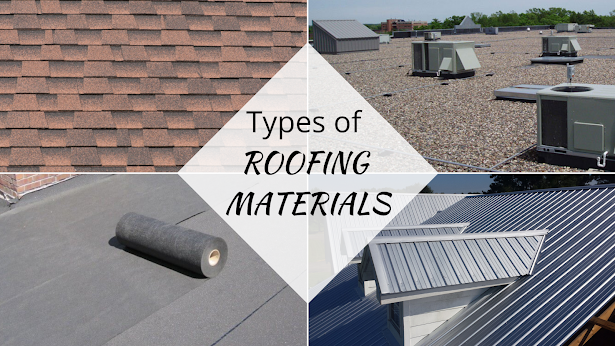Types of Roofing materials
1. Rolled roofing
Rolled
roofing material is the mainstay of low-slope residential roofs as well as
out-buildings like shops and sheds and other utilitarian structures. Rolled
roofing consists of long rolls of mineral-impregnated and asphalt-impregnated
material topped with mineral granules. Each roll is about 100 square feet of
roofing, and about 3 feet wide.
Rolled
material can be applied either with the torch down strategy or with roofing nails.
2. BUR – Built-up-Roofing
Built-up-Roofing (BUR) is probably the most
seasoned option for material for flat rooftops or roofs that are exceptionally
low in pitch. BUR frameworks are developed with a few layers of roofing felt
impregnated with a black-top that is applied hot. The felt is applied in covering
layers to shape an obstruction two to four-layer thick, then, at that point, a
layer of finely squashed stone is inserted in hot tar over the top to make a
truly sturdy and invulnerable rooftop.
3. Asphalt composite shingles
Asphalt composite
shingles are the most popular roofing material in North America. Made from a
fiberglass base topped with asphalt and mineral granules, these three-tab
shingles are an all-around good choice for most home roofing needs. They
typically come with a 20- to 30-year warranty, and replacing individual
shingles that are damaged is a fairly easy job. Virtually every roofing company
is familiar with installing these shingles.
4. Metal roofing
The most widely recognized kind of
metal rooftop is the standing seam rooftop, so named for the fact that the aluminum
or steel material boards meet in raised seams that interlock to keep moisture out.
Metal tops of numerous types are progressively famous in regions with
substantial snowfall or where there is a prominent peril of out-of-control
fires since this is a roofing material that is completely flame resistant.
5. Wood shingles
Wood rooftops are exceptionally attractive,
however, they are additionally very costly and have constraints. They do not
live longer, and they are a helpless decision in regions that get bunches of moisture
or where wildfires are a danger. All things considered, they are among the most
attractive of all roofing materials, which settles on them a well-known
decision for extravagant homes.




Comments
Post a Comment